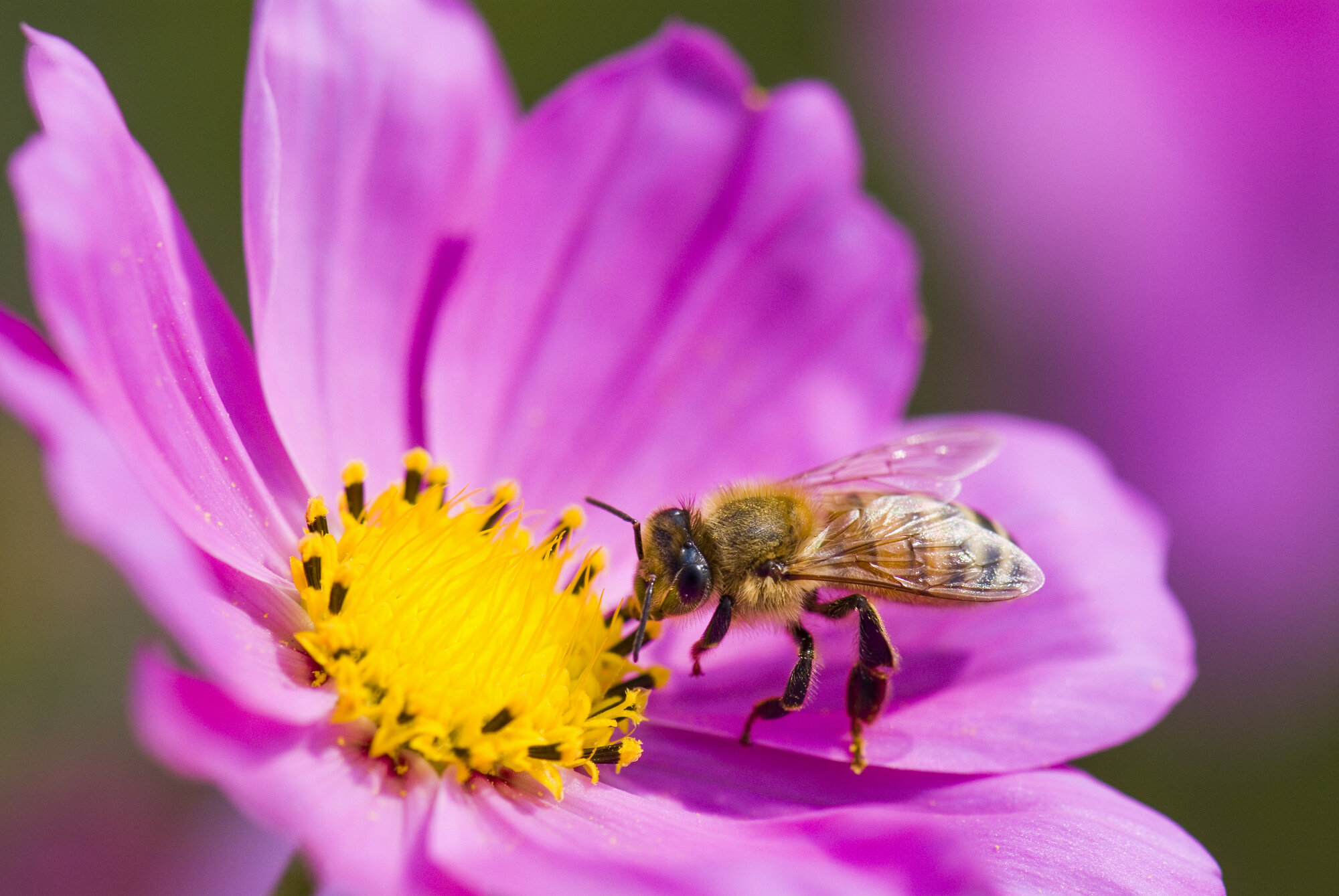Avoiding bee stings is usually easy. The first step is to avoid aggravating bees. Honey bees. aren’t dangerous as long as you do not threaten their hive. In some cases, people are allergic to bee stings and these people may experience an allergic reaction that requires immediate medical attention. If the site of a sting swells significantly and/or moves to other parts of the body this is a common sign to seek help. Other signs include difficulty breathing, redness, tenderness, nausea, hives, or dizziness.
If the victim of a sting has no known allergy, it’s important to stay calm and focus on backing away from the area where they were stung. Some more aggressive bees, such as the Africanized honey bee, are known to chase intruders when threatened. Next, calmly and carefully remove the stinger by scraping across it with a fingernail or a hard edge like a credit card. We don’t recommend tweezers because the pulling and squeezing can release more venom as you try to pull it loose. Next, wash the area with fragrance-free soap and water. Then, apply a cold pack or ice to reduce potential swelling. Over-the-counter pain medication, such as ibuprofen or acetaminophen, can help relieve the pain. The skin and muscles affected may be sore for several days but it isn’t a striking pain.
If you think you have an active beehive on your property, contact the experts when it comes to bee and pest control. Hill Country Pest Control Kerrville offers beehive removal and many other services in the Kerr County area to keep you and your loved ones safe.

